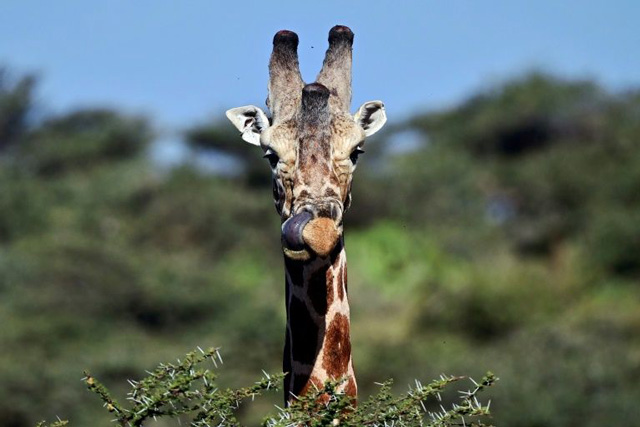
Wildlife protections tightened as southern Africa protests
Geneva, Switzerland | AFP | A global wildlife summit has decided to regulate trade in giraffes and tighten protections for endangered animals including elephants, triggering a threat from disgruntled southern African nations to leave an international treaty.
Parties to the Convention on International Trade in Endangered Species (CITES) wrapped up a 12-day meeting in Geneva on Wednesday after approving a long list of proposals to tighten protections.
The treaty, created more than four decades ago, regulates trade in some 36,000 species of plants and animals and contains mechanisms to help crack down on illegal trade and sanction countries that break the rules.
The sense of urgency was palpable at the conference following warnings of rapid species decline, with a UN report in May indicating that one million species are being pushed to the brink of extinction.
– ‘Extinction crisis’ –
“Humanity needs to respond to the growing extinction crisis by transforming the way we manage the world’s wild animals and plants,” CITES Secretary-General Ivonne Higuero said at the close of the conference.
The delegates from more than 180 countries appeared to have heeded her call, adding a number of new species to the CITES lists of animals and plants accorded trade protections.
A total of 139 species were either listed for the first time or given higher protections.
They decided for the first time to list giraffes in CITES Annex II, thus requiring tracking and regulation to ensure any trade is sustainable, after fears the gentle giants are facing a “silent extinction”.
The African giraffe population has shrunk by an estimated 40 percent over the past three decades to just under 100,000 animals, according to figures available to the International Union for Conservation of Nature (IUCN).
Giraffes have been especially hard-hit by habitat loss, but with their vote, the delegates have acknowledged that international trade in skins, horns and bones are contributing to their decline.
But the proposal met harsh resistance from southern African countries, where the giraffe populations are healthier and have traditionally been better protected.
They argued against the notion that trade was a factor in the population decline, and lamented that the listing decision was unfair to countries that have strived to protect their giraffes.
Southern African countries also voiced frustration at a number of decisions involving African elephants, including a near-ban on sending wild-caught elephants from the continent to zoos.
Zimbabwe, a major provider of wild-caught baby elephants to facilities in China, attempted in vain to block a vote on the issue on Tuesday by invoking a mechanism never before used in CITES’s four-decade history.
Zimbabwe’s President Emmerson Mnangagwa also lambasted the CITES conference’s rejection of a request by a number of countries in southern Africa to sell their stockpiles of ivory.
Global trade in elephant ivory has largely been outlawed since 1989 after their numbers plunged, falling from millions in the mid-20th century to an estimated 415,000 in 2015.
But countries in southern Africa, where populations are considered healthy and well-protected, argue they should be allowed to sell stockpiles to help fund conservation efforts.
Speaking on behalf of 10 southern African countries, Tanzania’s representative warned Wednesday that they might withdraw from CITES.
“Time has come to seriously reconsider whether there are any meaningful benefits from our membership to CITES,” he said.
Such a scenario “is of great concern to me,” Higuero told reporters, saying she regretted that some countries felt their arguments were not being heard, but insisting that “to leave is not the solution”.
In another controversial move, delegates in Geneva also decided to list 18 species of rays and sharks, including the mako — the fastest shark in the ocean — in Annex II.
– ‘Bittersweet’ –
The conference also decided to significantly tighten protections for a number of species already on the CITES radar.
Delegates for instance decided to strengthen protections of two endangered species of Asian otters that have come increasingly under pressure after a social-media fuelled craze for acquiring the silky mammals as pets.
The Asian small-clawed otter and the smooth-coated otter were both moved from Annex II to Annex I, meaning all international trade will be banned.
The same was true for a number of other species under pressure from the exotic pet trade, including the Indian star tortoise.
Conservationists largely hailed the conference for significantly tightening protections for a long line of species.
But Susan Lieberman of the Wildlife Conservation Society acknowledged that providing more CITES protections to species was “bittersweet success”.
“It means that more and more species are threatened or endangered and need the full protection,” she said in a statement.
 The Independent Uganda: You get the Truth we Pay the Price
The Independent Uganda: You get the Truth we Pay the Price


